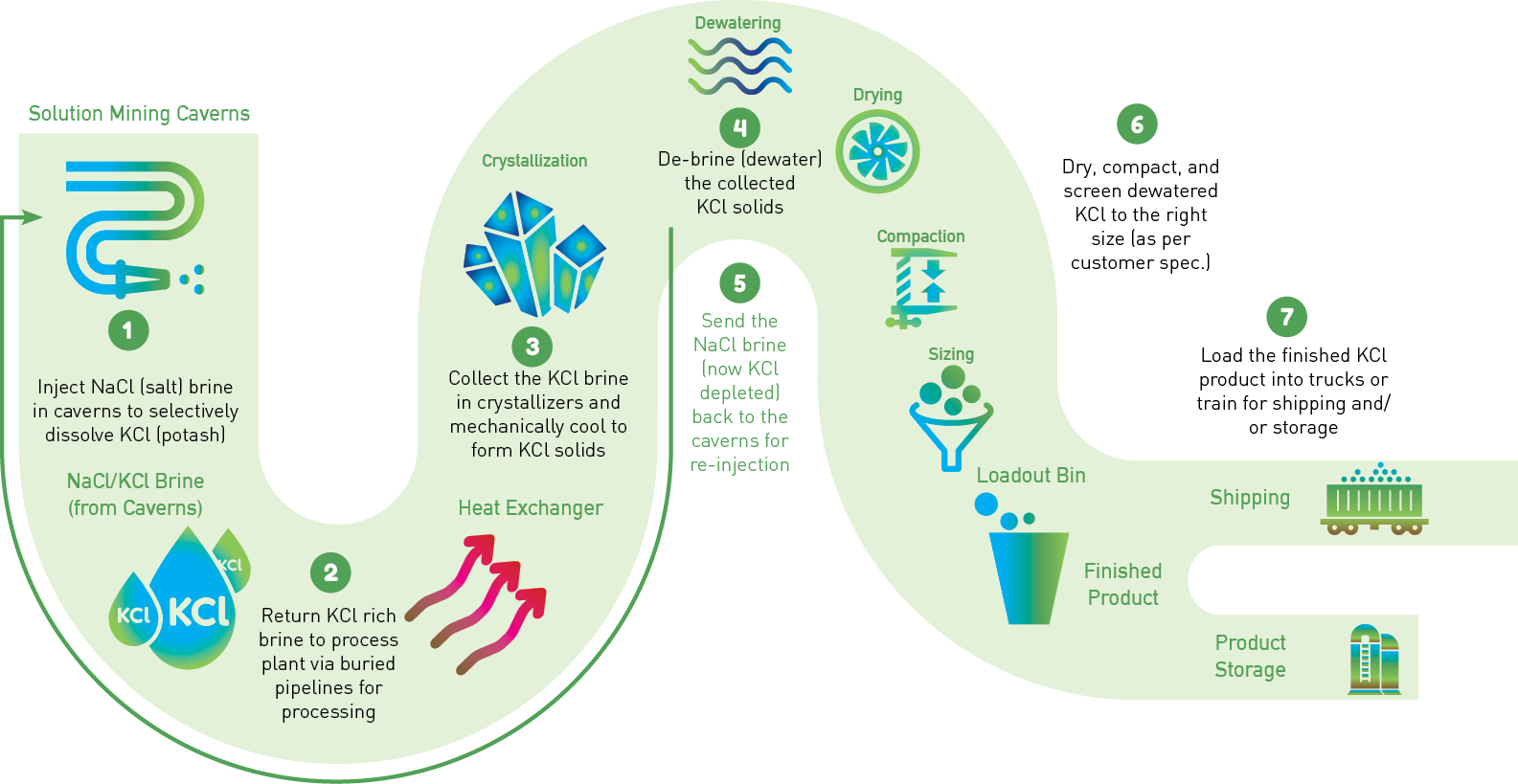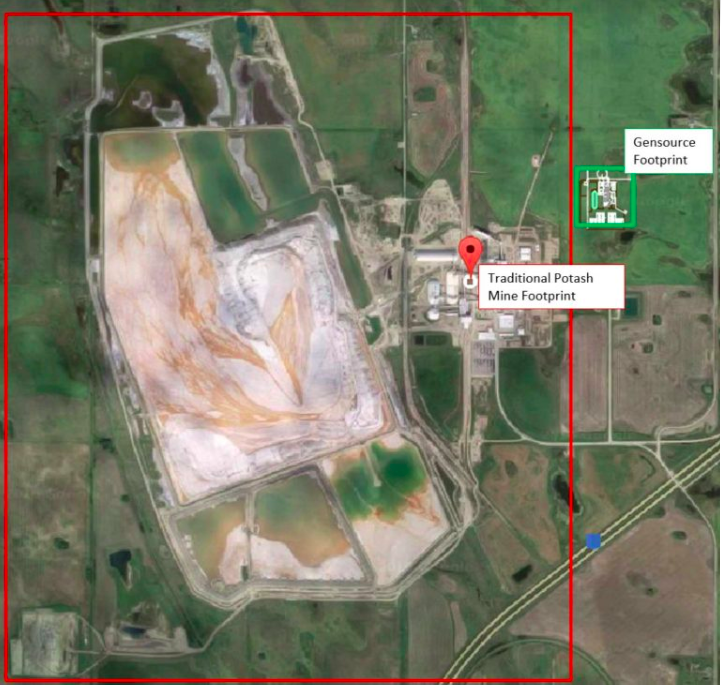Gensource produces potash using a closed-loop method called selective extraction (or selective solution mining) that has little environmental impact. It works like this: A hot salt (NaCl) brine is injected into horizontal caverns in the ore body, which selectively dissolves potash (KCl) leaving salt in place. The KCI-rich brine is then processed (KCI ‘drops out’ through cooling crystallization) and the NaCl brine is reheated and re-circulated back to the cavern to repeat the process.

A clean approach with less impact on air, water, and land.

AIR
Power is self generated at site using natural gas, not coal. By not using grid power, a Gensource module will avoid up to 24,500 tonnes/year CO2e of emissions.

WATER
A Gensource module will use up to 75% less water per tonne of
potash than conventional solution mining methods and the ability to use a brackish water source reduces fresh water usage even further.

LAND
With no salt tailings, no brine ponds and its small size, a Gensource module is light on impact – to the point that regulators did not require a full Environmental Impact Assessment for the project.
Gensource method vs. traditional potash mining: key benefits.
Gensource projects or modules have a much smaller footprint yet they extract up to 10 times the resource from the same area. Other benefits include:
- smaller size projects are welcome by local communities
- provide long-term employment
- less impact on community infrastructure and utilities
- no salt tailings or brine ponds
- can use brackish water, not fresh water
- self-generating power
- projects are scalable and repeatable
A Gensource module avoids the environmental impacts that conventional potash mines are responsible for, including:
- massive salt tailings stored on surface for an indefinite period
- large fresh water consumption
- large demand on utilities

Take a virtual tour of a Gensource module.
